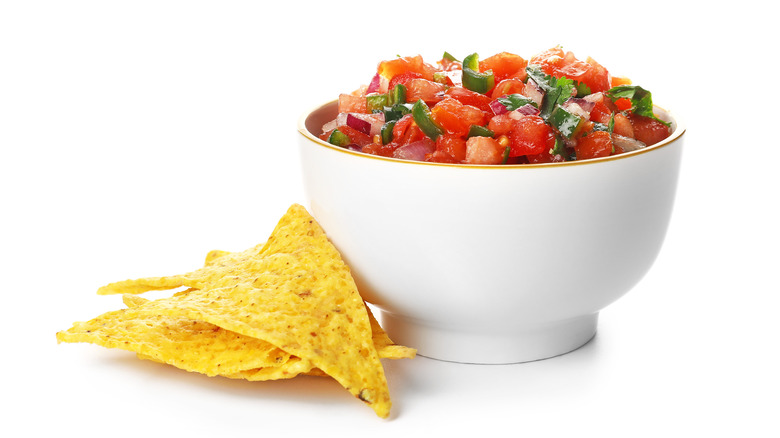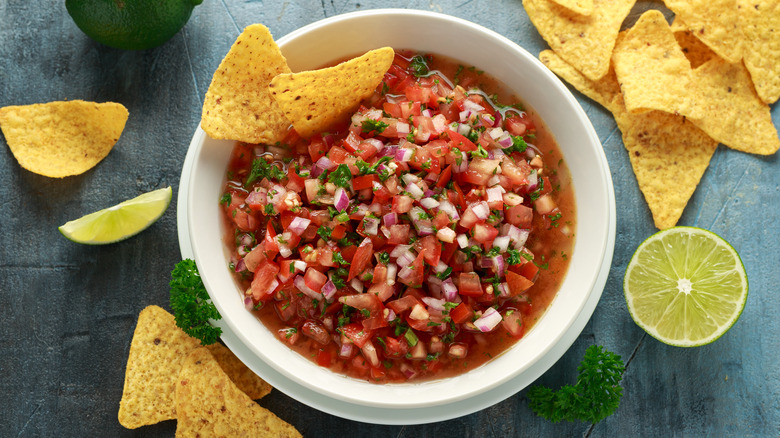The Ancient Origins Of Salsa
Salsa's popularity in the U.S. exploded in the late 1980s when sales skyrocketed by nearly 80% nationwide, explains The Nibble. By 1991, salsa had surpassed ketchup as the best-selling condiment in total sales. Of course, salsa as a category is notably broad — according to the U.S. Department of Agriculture, it includes all tomato-based salsa products. Perhaps this is partly because of the word itself. Salsa, in Spanish, simply means sauce. But salsa as a condiment, chip dip, side dish, or standalone snack featuring tomato and chiles does have a rich history in the U.S. and a positively ancient history in its ancestral home of México.
It's believed both tomatoes and tomatillos (which are used in salsa verde) were first domesticated in México, although Britannica dates tomatillo use by the Aztecs to 800 BCE, while tomatoes are believed to have been domesticated during the pre-Columbian period. The use of ancient salsas by the Aztecs is famously chronicled in Bernardino de Sahagún's "Florentine Codex" after the Spanish conquest of México in the early 16th century, per The Nibble. Sahagún transcribed salsas that included tomatoes and chilies, as well as ingredients like squash seeds and beans.
The history of salsa in the U.S.
Another episode of early salsa use in México is recorded by Bernal Diaz del Castillo, who took part in the Spanish conquest. According to an episode related in Castillo's book on the subject, notes the San Miguel Times, the Spanish conquistadors believed indigenous residents of Cholula wanted not only to kill but eat them, having prepared for the feast to come by filling pots with chili peppers, tomatoes, and salt. This use of salsa appears consistent with the way in which Aztecs used their salsas as flavoring sauces or condiments for venison, fish, and turkey, per The Nibble. The Aztecs' version of salsa was first officially referred to by that name by Spanish priest Alonso de Molina in 1571.
The development of salsa in the U.S. rightfully begins with the first commercial hot sauces sold in the 19th century, explains The Nibble, but actual salsas didn't appear until the 20th century. The most notable came from California-based La Victoria, which produced the first jarred salsas, per La Victoria. The company was sold by the La Bacas family to German immigrant Henry Tanklage in 1941, and Tanklage helped to popularize salsa throughout the west, introducing red salsa jalapeño and green chili salsa by 1946.

